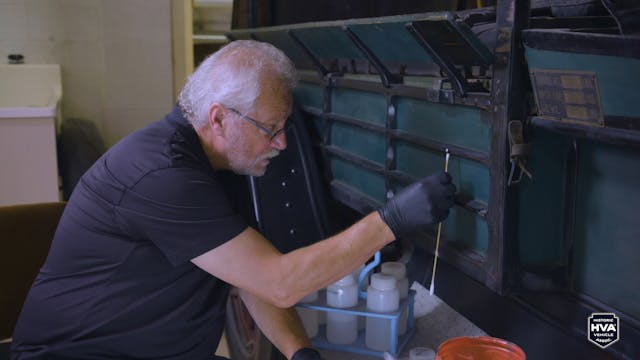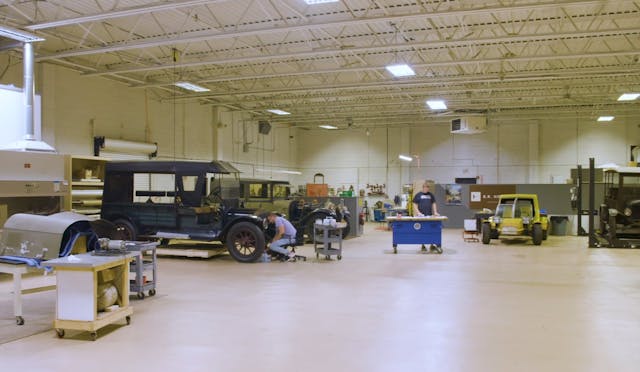A conservator’s search for truth can be found beneath a vehicle’s paint

Brian Howard compares the removal of overpaint on a classic vehicle to an archeological dig.
“You’re not going to excavate the whole site. When (archeologists) come in, they’re kind of doing a survey,” says Howard, principal conservator at B.R. Howard & Associates, in the fourth episode of The Conservator’s Mindset, a video docuseries from the Historic Vehicle Association.
Howard continues with that comparison while he works to dissolve overspray on a rare 1911 White. “We’re opening up an area to see what’s there, but we’re going to leave the rest alone [until receiving further direction from the owner] … Hopefully they aren’t going to come in with the bulldozers and take the rest of the site out since they know that there’s really something underneath.”
Using different solvents and carefully working to remove several past paint jobs with a cotton swab, Howard demonstrates how he discovered red pinstripes in the original paintwork. “Once you know it’s there, you can pick it up [in other places],” he says. “The whole process is a matter of taking your time and going very slowly … We don’t want to go too far. We don’t want to go through the paint to the underlying primer or even an early paint layer. I’m trying to get through one layer at a time.”

Howard admits, “It’s a tedious process that takes weeks,” but it generally pays off in a big way. For example, Howard worked on the carriage that carried President Abraham Lincoln to the Ford Theatre on the night he was assassinated in 1865. The carriage, which was black when Howard began working on it, was reportedly painted green originally and had a gold monogram on the side. Howard’s work confirmed it. (The carriage resides in the Studebaker Museum in South Bend, Indiana.)
“My goal is to present an area that says, ‘This is what’s under this paint … This is what can be achieved. So, before anything is done in the future, consider my notes, look at my reports, look at the photo documentation, and then make your decisions about what’s going to be done to it.’”
Watching paint dry may be boring, as the saying goes, but watching it come off can be a fascinating discovery of an automobile’s history.
The Conservator’s Mindset is part of the HVA’s Drive History video initiative, which showcases veteran preservationists, historians, and automotive experts and also features vehicles in the National Historic Register. Videos are scheduled to be released every Wednesday.
We’ll be sure to keep you posted about each new episode; you can also stay in the loop by following the HVA on Facebook, Instagram, and Youtube.

